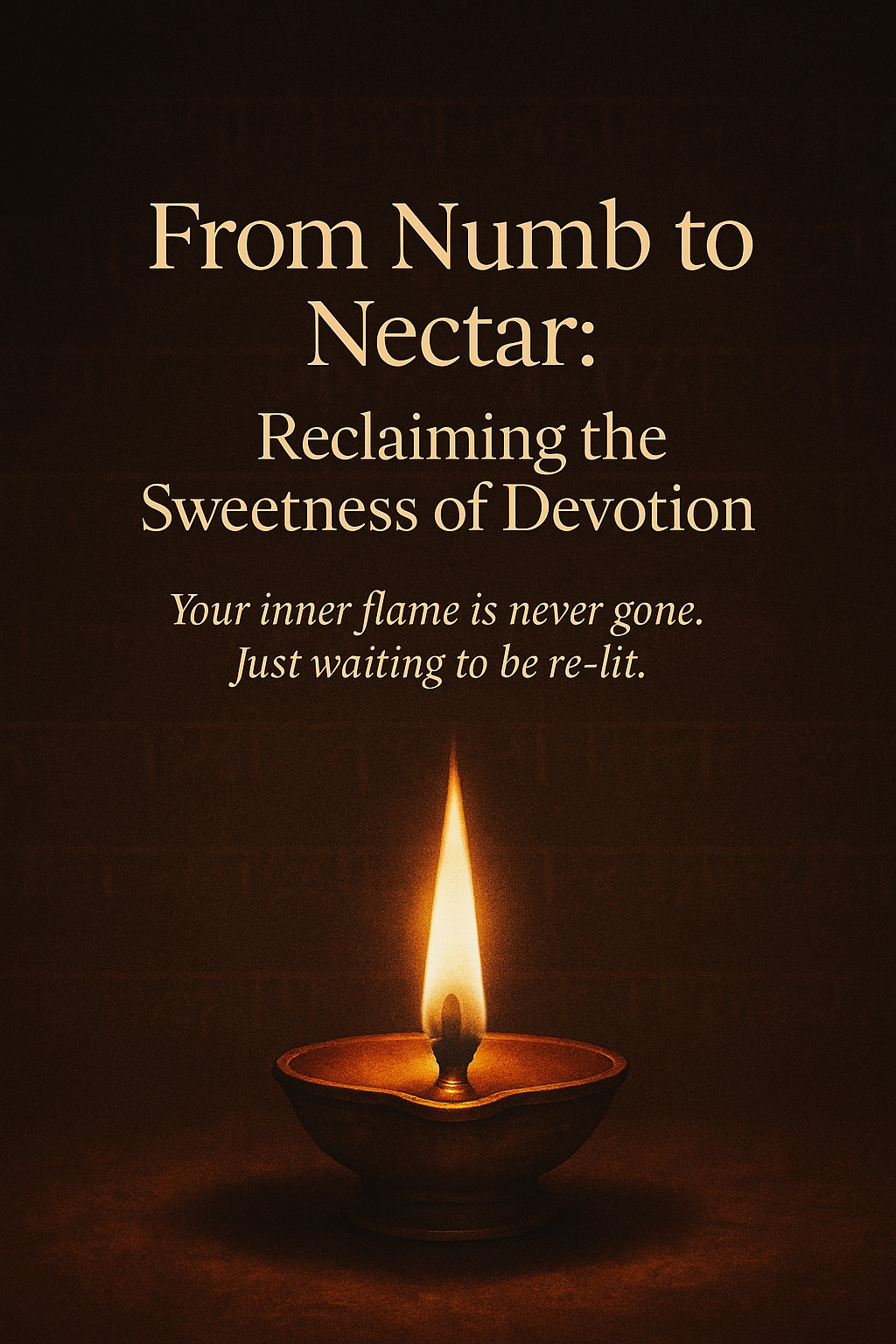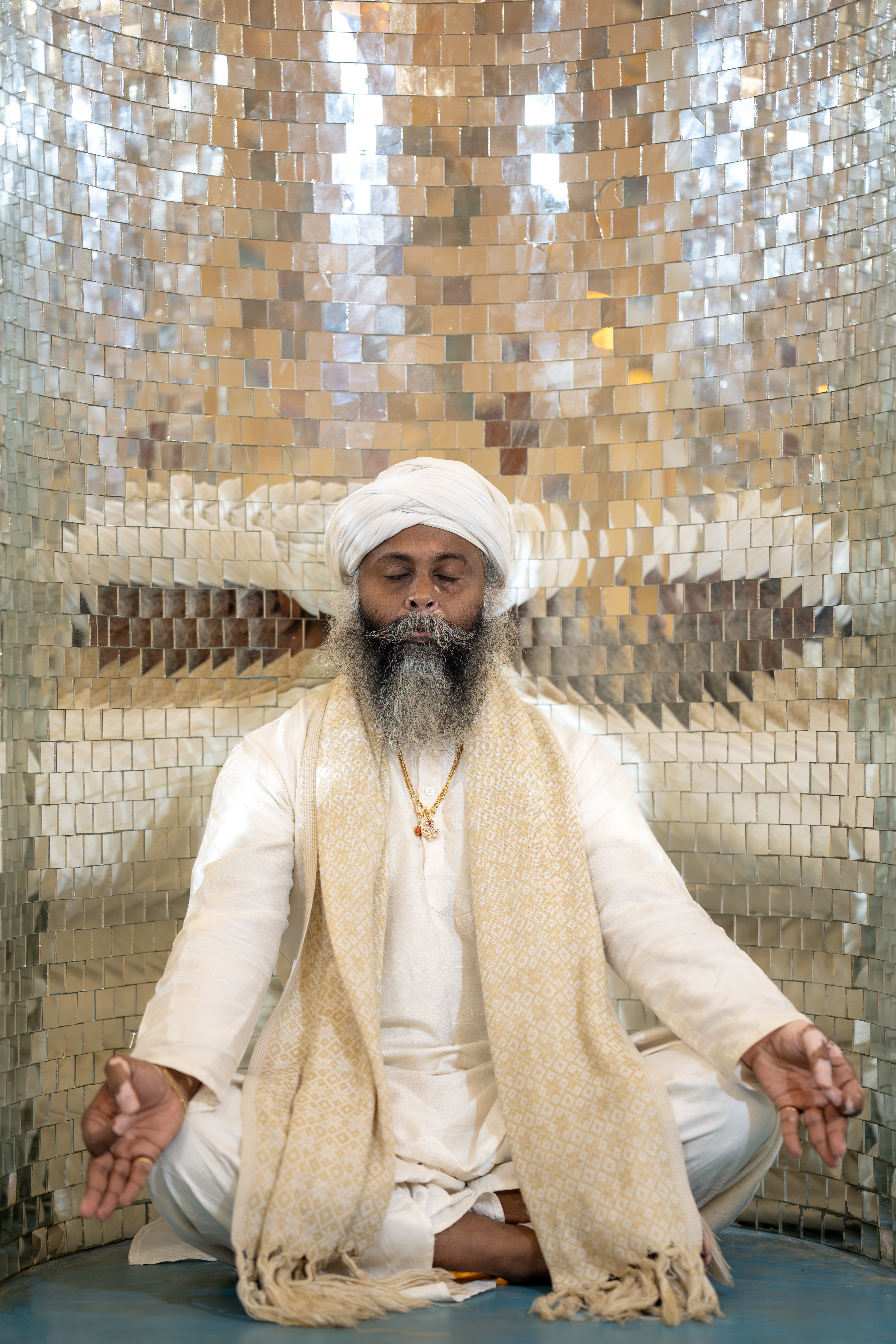When the sun dips below the horizon and the day exhales its final golden breath, a subtle magic awakens in temples, homes, and hearts. Bells ring, lamps glow, and the ancient ritual of Āratī begins—a sacred offering of light and devotion, weaving together the five elements of existence into a living prayer.
Āratī is not just a ritual; it is a reminder.
A remembering of the elemental forces that birth and sustain life—and a way to offer them back to the Divine with reverence and love.
A remembering of the elemental forces that birth and sustain life—and a way to offer them back to the Divine with reverence and love.
Earth (Prithvi): The Foundation of Offering
The very materials we use in Āratī—the brass or silver lamps, the sandalwood paste, the flowers—are gifts from Earth herself. Each object placed before the deity is a whisper of gratitude to the nurturing, fertile ground that holds and feeds us.
The lamp itself, heavy and solid in the hand, reminds us of the stability and support of Prithvi. As we offer the lamp, we root ourselves in humility, recognizing that all we possess comes from the sacred body of the Earth.
"I offer the gifts of the earth, molded by hands and prayers,
in gratitude for the ground that bears my every step."
in gratitude for the ground that bears my every step."
Water (Apas): The Flow of Devotion
Water is present subtly but powerfully in Āratī. Before the ceremony, the deity is often bathed in sacred water (abhisheka), a cleansing and anointing that symbolizes purification and blessing.
The freshness of flowers dipped in water, the coolness of wet sandalwood paste, the offerings of pure water to the deity—these acts reflect the flow of devotion, the emotional currents that move the soul toward surrender and sweetness.
"I offer the flow of my heart,
like rivers returning to the ocean of the Divine."
like rivers returning to the ocean of the Divine."
Fire (Agni): The Illuminating Flame
At the heart of Āratī is Fire—the dancing flame that blazes upon the lamp, burning ghee or oil with cotton wicks. Fire represents transformation, light, and the burning away of ego.
When we wave the lamp in circular motions before the deity, it is as if we are inviting the light of consciousness to circle within our own being, burning impurities, illuminating truth, and igniting love.
The flickering flame is not merely a physical fire—it is the spark of Agni within every heart, calling us home.
"I offer my inner fire,
that it may burn away ignorance and awaken my soul."
that it may burn away ignorance and awaken my soul."
Air (Vayu): The Breath of Offering
As the lamp moves through the air, the flames dance and breathe. The Air carries the fragrance of incense, the sound of bells, the murmuring of prayers—all invisible yet palpable presences that touch the unseen realms.
Āratī is alive with Vayu. Our own breath becomes part of the offering—each inhalation a receiving, each exhalation a giving.
In the movement of the hand, the flowing incense smoke, and the chanting that vibrates the air, we feel the intimate presence of Vayu, the life-force that animates all.
"I offer my breath,
woven with the names of the Beloved,
as sacred wind in the unseen temple of the heart."
woven with the names of the Beloved,
as sacred wind in the unseen temple of the heart."
Ether (Akasha): The Space of Union
Beyond what we see, hear, and touch, there is Space—Ether—the vast field in which all the other elements exist and dance.
Āratī creates a sacred Akasha: a vibrational space filled with light, scent, sound, and devotion. In this space, the boundary between human and Divine thins. For a few precious moments, we are not separate—we are absorbed into the song of existence itself.
Ether reminds us that beyond all forms and rituals, it is the purest love that fills the space between us and the Divine.
"I offer the vastness of my soul,
empty and full,
where only the Beloved remains."
empty and full,
where only the Beloved remains."
Conclusion: Āratī — A Cosmic Offering
Āratī is a ceremony of elements, a choreography of earth, water, fire, air, and ether, harmonized into a single act of devotion. It teaches us that everything we need to worship the Divine has already been given to us by the Divine.
When we perform Āratī—whether in a temple, at home, or within the silent temple of our heart—we are participating in the eternal rhythm of creation itself.
We are offering ourselves, fully and humbly, back to the Source.
We are offering ourselves, fully and humbly, back to the Source.
And in that offering, we too are illuminated.


0 Comments